It’s not every day you come across a field of alpacas—especially with a camera in hand, a free hour and permission to take photos! Yet, that’s exactly what happened at Meadow Brook Stables in Alton, Nova Scotia where a small herd of alpaca were recently added to the farm.
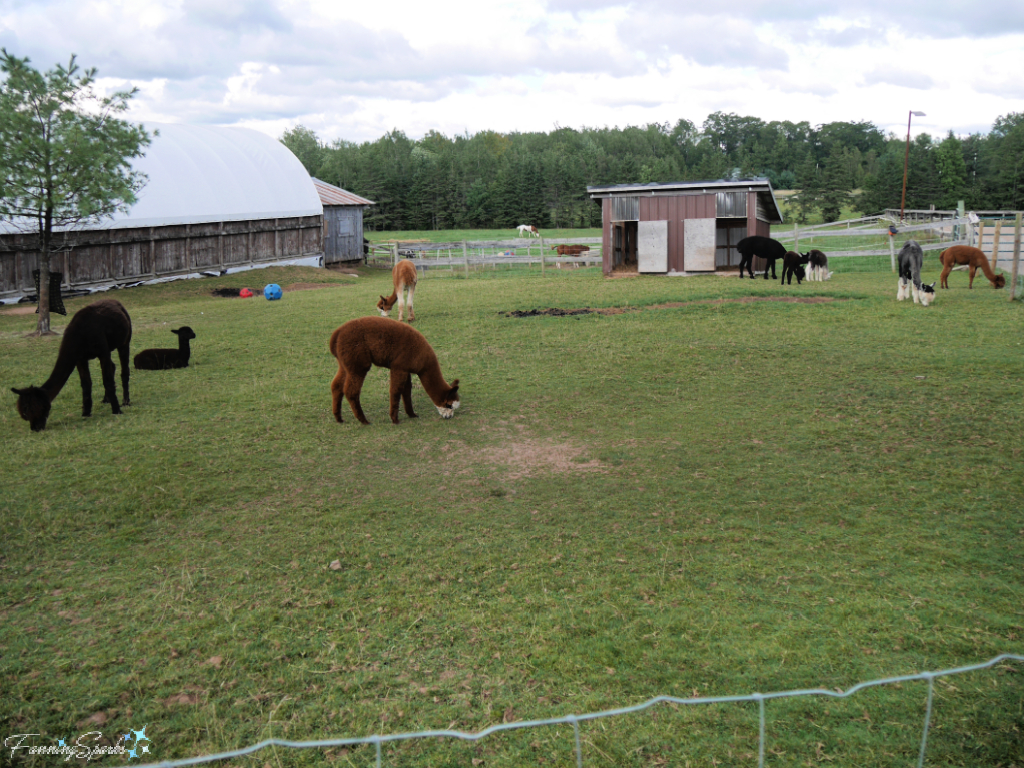
“Alpacas are raised for their soft and luxurious fleece (fiber). Each shearing produces roughly five to ten pounds of fleece per animal, per year.” according to the Alpaca Owners Association. “Alpacas (vicugña pacos) are members of the Camelid Family. … Today there are five recognized camelids breeds: camels, llamas, guanacos, alpacas, and vicunas. They vary by size and purpose, some being used primarily as pack animals and others valued for their fiber. … Camels, llamas, and alpacas have been domesticated for thousands of years, whereas guanacos and vicunas continue to roam freely in herds. Many people are familiar with humped camels … Next in size is the llama (domesticated guanaco), followed by the alpaca (domesticated vicuna).”

In addition to being valued for their fleeces, alpacas are cherished for their personality. A scan of alpaca related websites reveals an array of adjectives for these animals: “endearing” says the Canadian Co-operative Wool Growers Limited; “very smart animals, gentle, and easy to handle … shy, but very curious, quiet, and intelligent” says Alpaca Meadows; “alert, curious, calm and predictable” says Brigadoon Fiber Farm; “calm and aloof, highly intelligent and easy to train” says Threads of Peru.
There were four “crias”, baby alpacas, in this herd and they were indeed endearing!
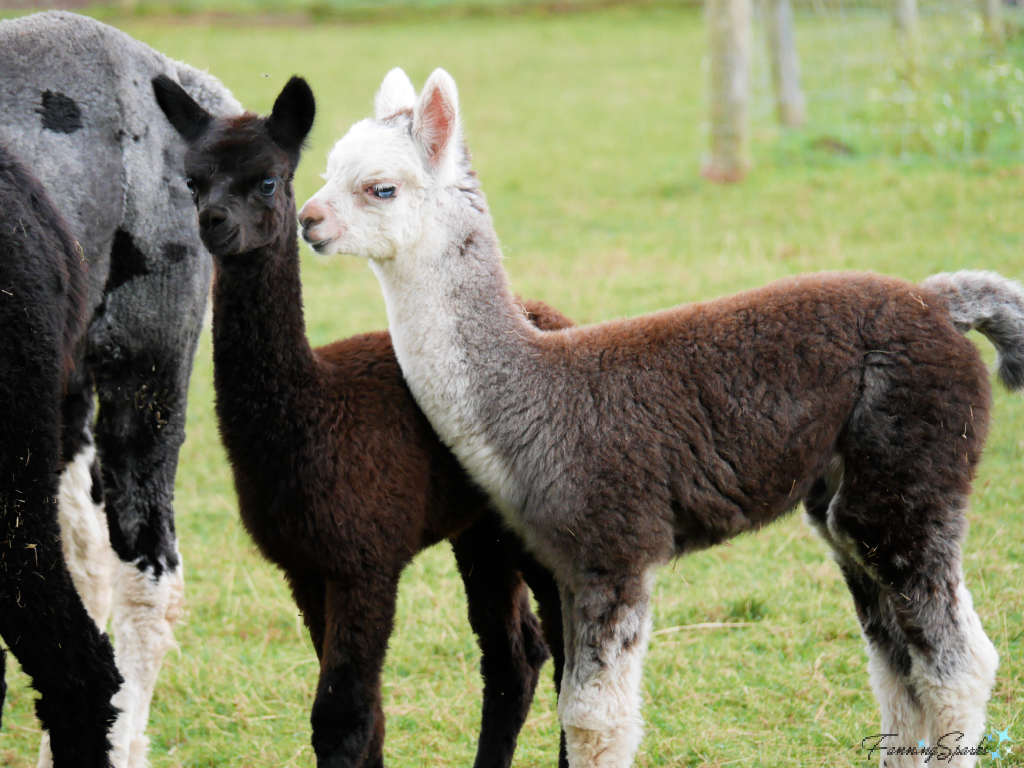
Here is a cria “cushing” which means sitting down with all four legs tucked under its body and its head erect.
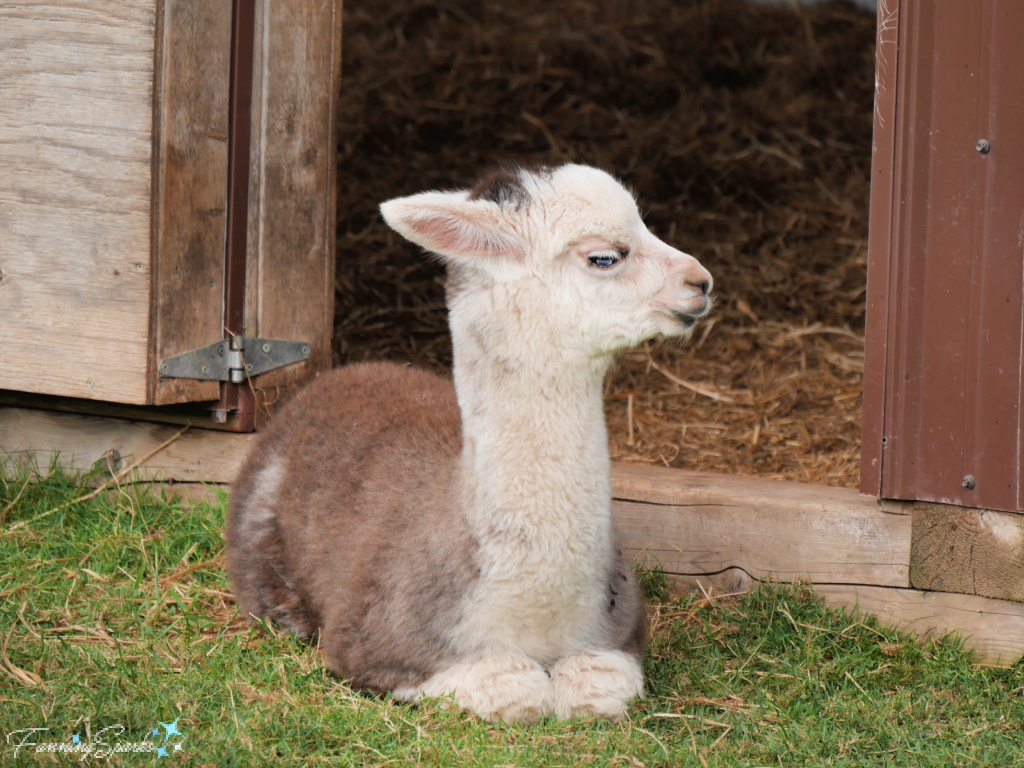
“Calm and aloof” also seemed to be an apt description. Check out these regal poses!
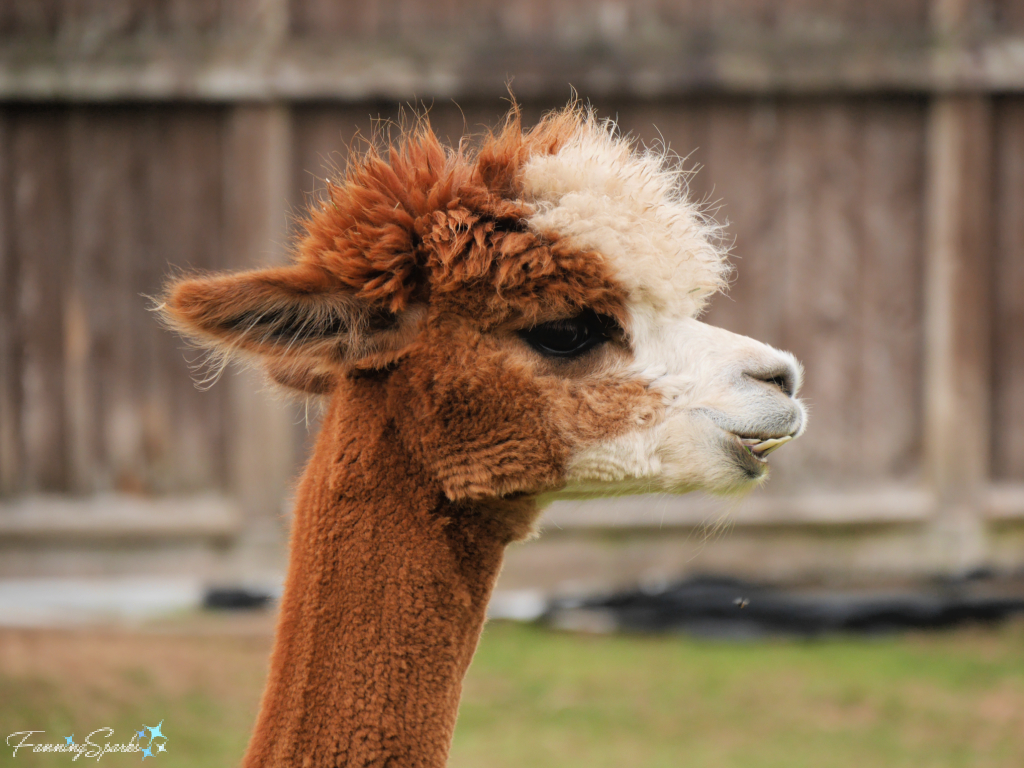

Female alpacas, I’ve learned, are usually first bred at 18-24 months of age. The gestation (pregnancy) period is around 11.5 months. They usually have only one cria which is normally delivered, without intervention, from a standing position during daylight hours. A cria normally weighs between 15 and 19 lbs. It typically starts nursing within 90 minutes of birth and continues nursing until it is weaned after six months.
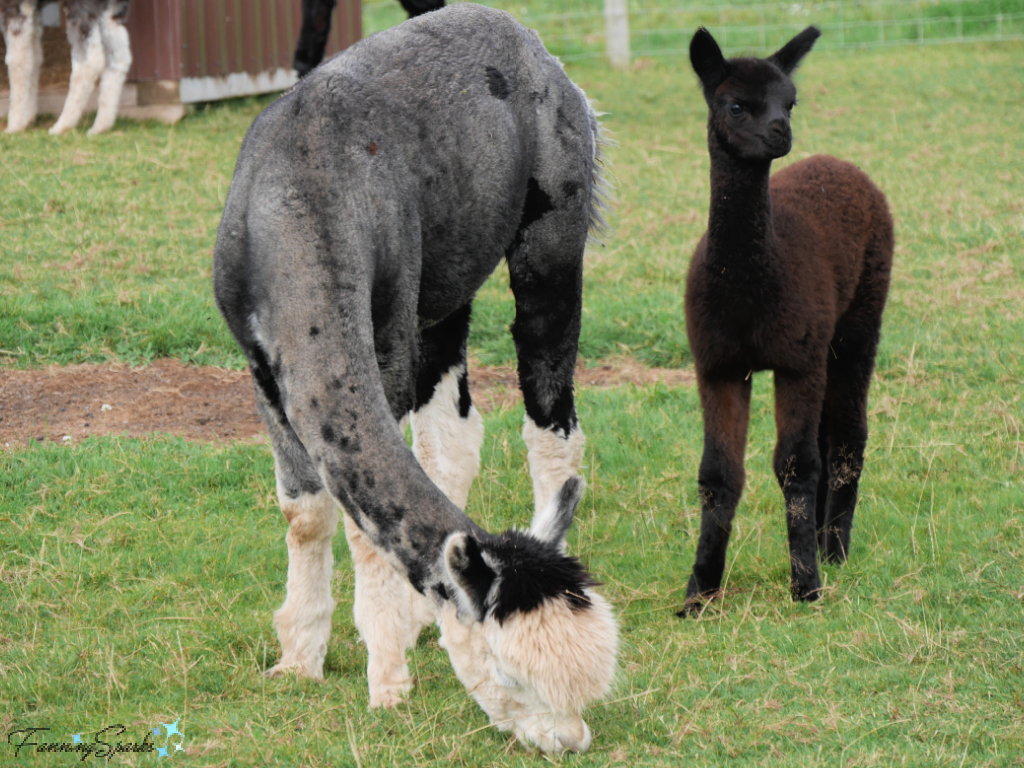
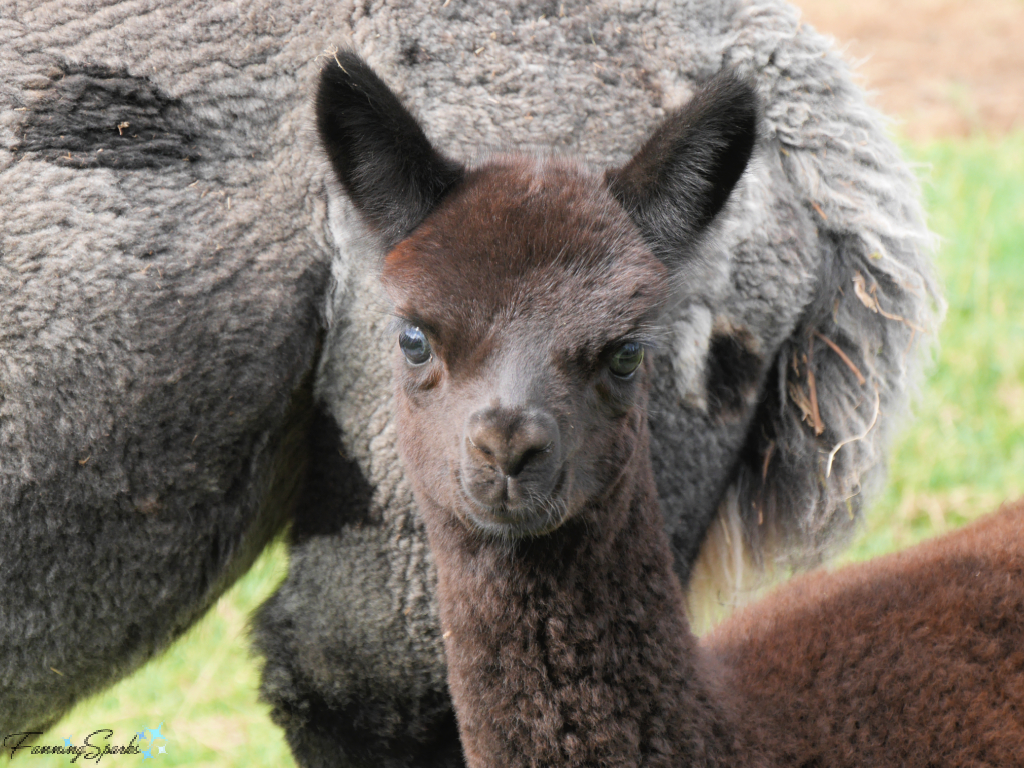
Interestingly, alpacas have strong social instincts and need the companionship of a herd to thrive.
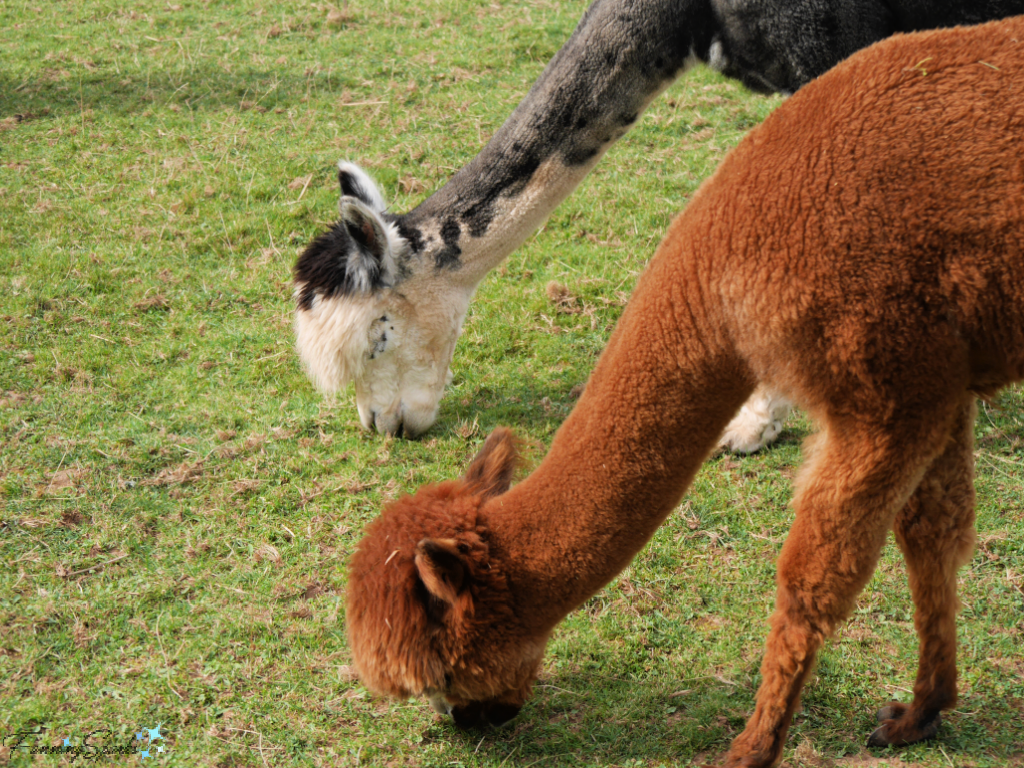
“Alpacas mainly eat grass or hay. They consume approximately … 1.5% of the animal’s body weight daily in hay or fresh pasture. … Alpacas have two sets of teeth for processing food. They have molars in the back of the jaw for chewing cud. In the front, alpacas have teeth on the bottom only and a hard gum … on the top for crushing grain, grass, or hay. Unlike goats and sheep that have long tongues which can rip plants out of the ground, alpacas have short tongues and nibble only the tops of grasses and other plants. This results in less disturbance of the vegetation.” reports the Alpaca Owners Association.
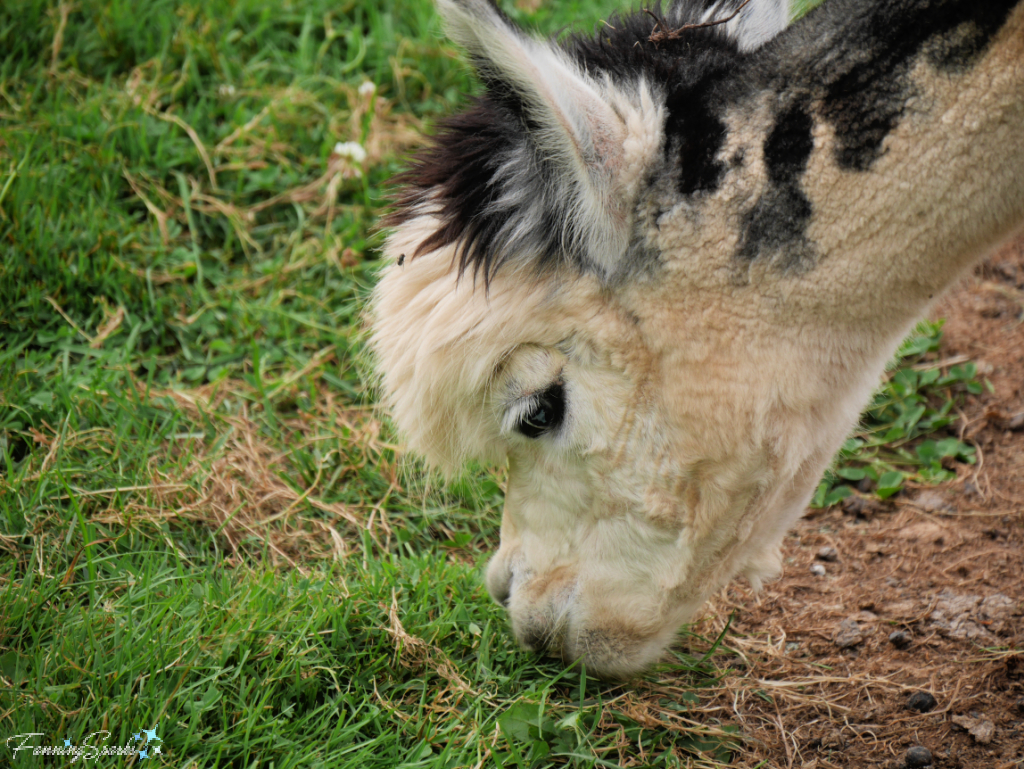
On the farm, meals are served in a variety of ways—food dish, hay bag and hay ball feeder—and obviously enjoyed.
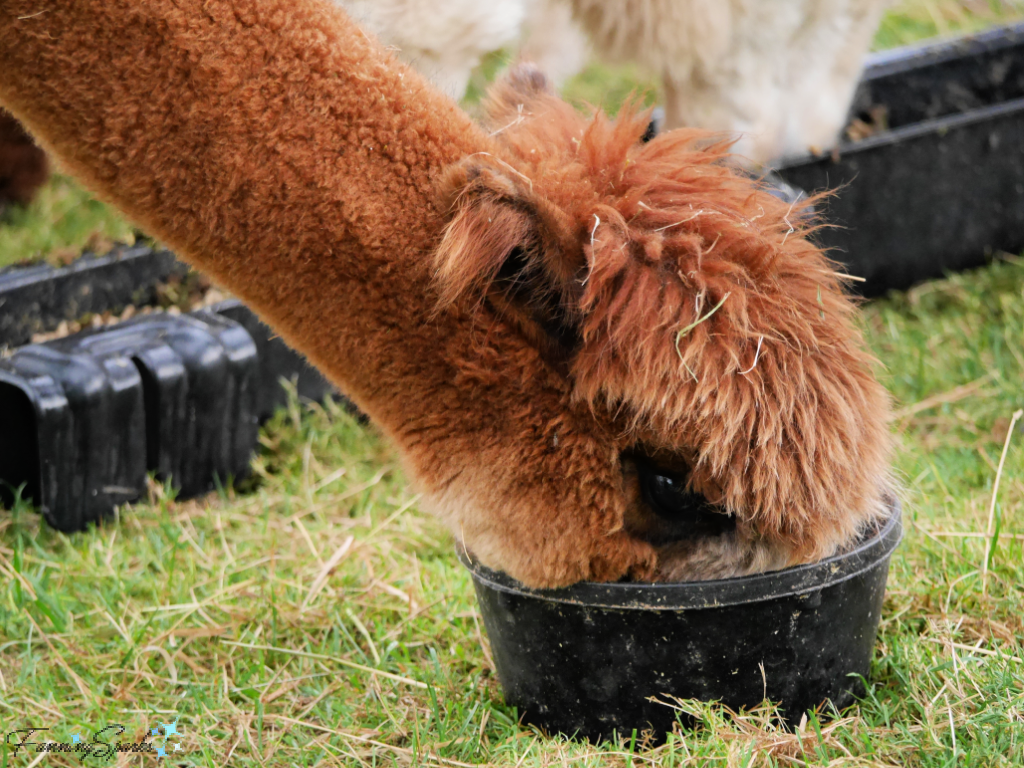

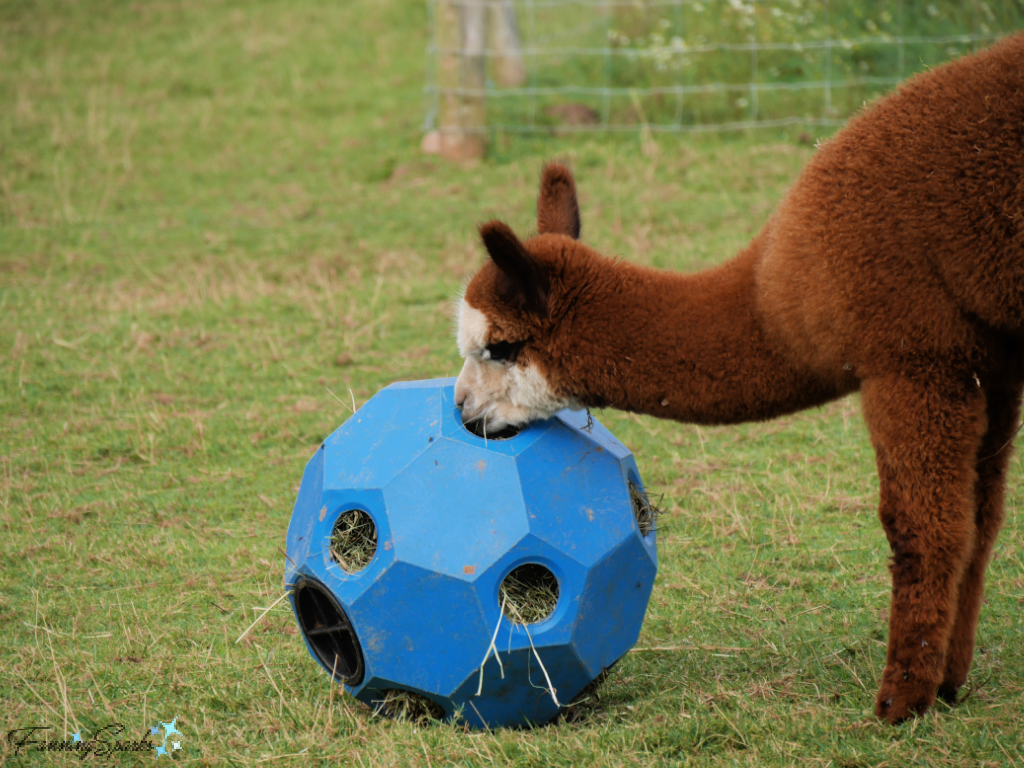
Yet, the grass is always greener on the other side of the fence!
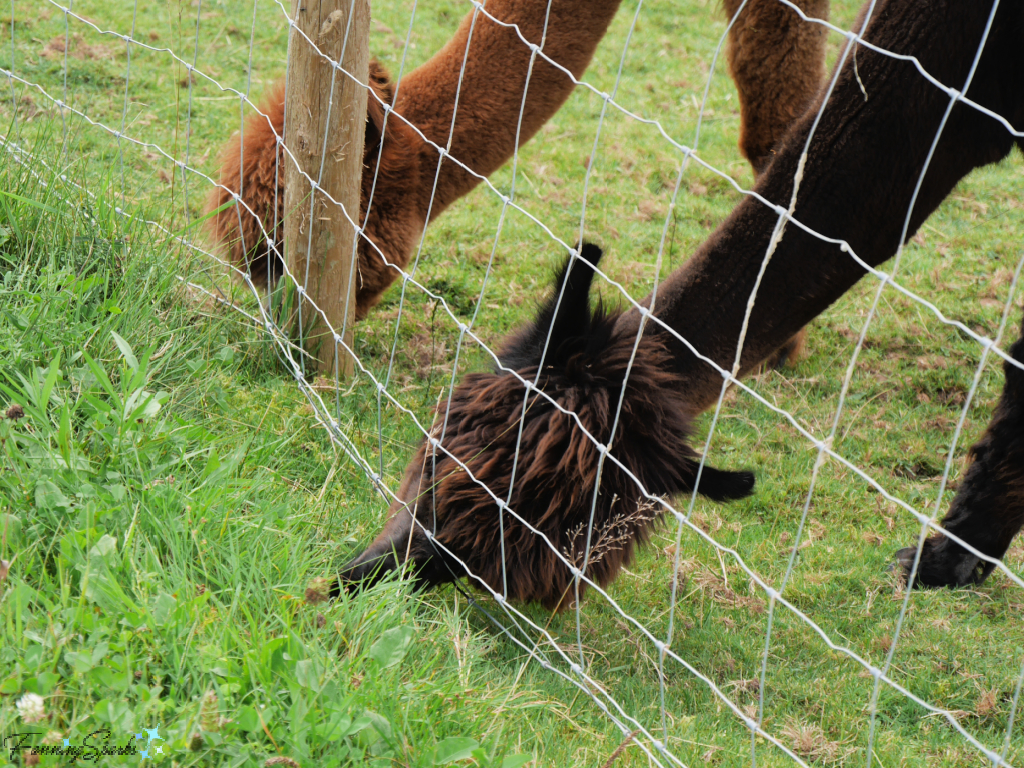
Photographing alpacas is very rewarding. Their “teddy bear” looks, …
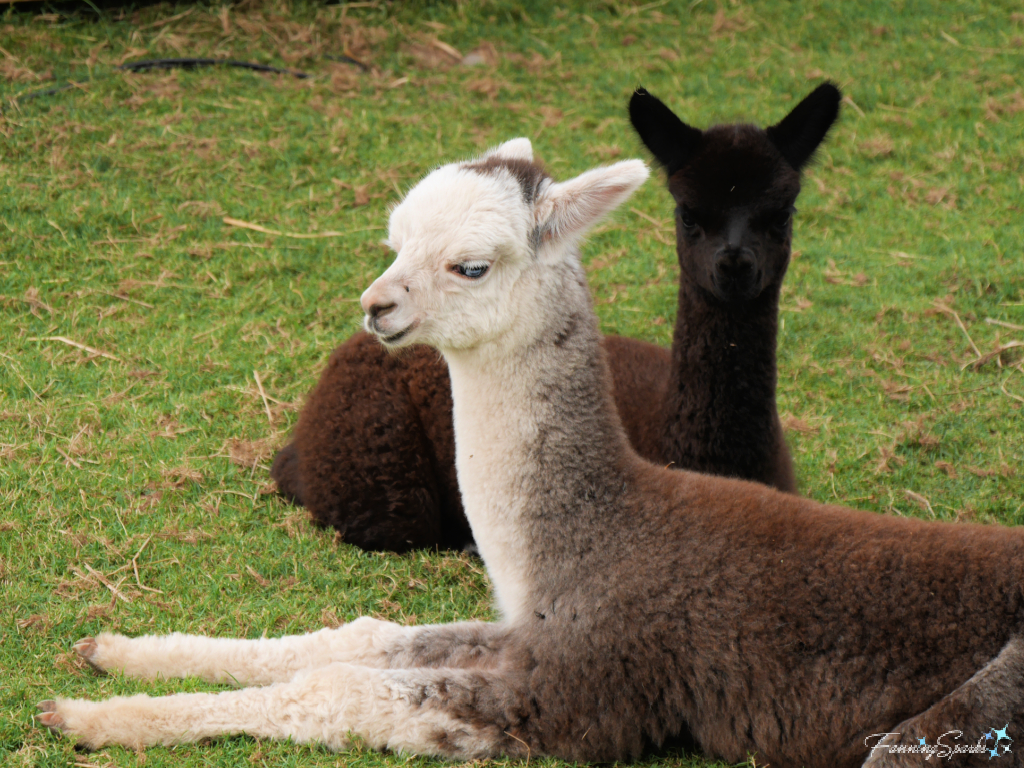
… nimble moves, …
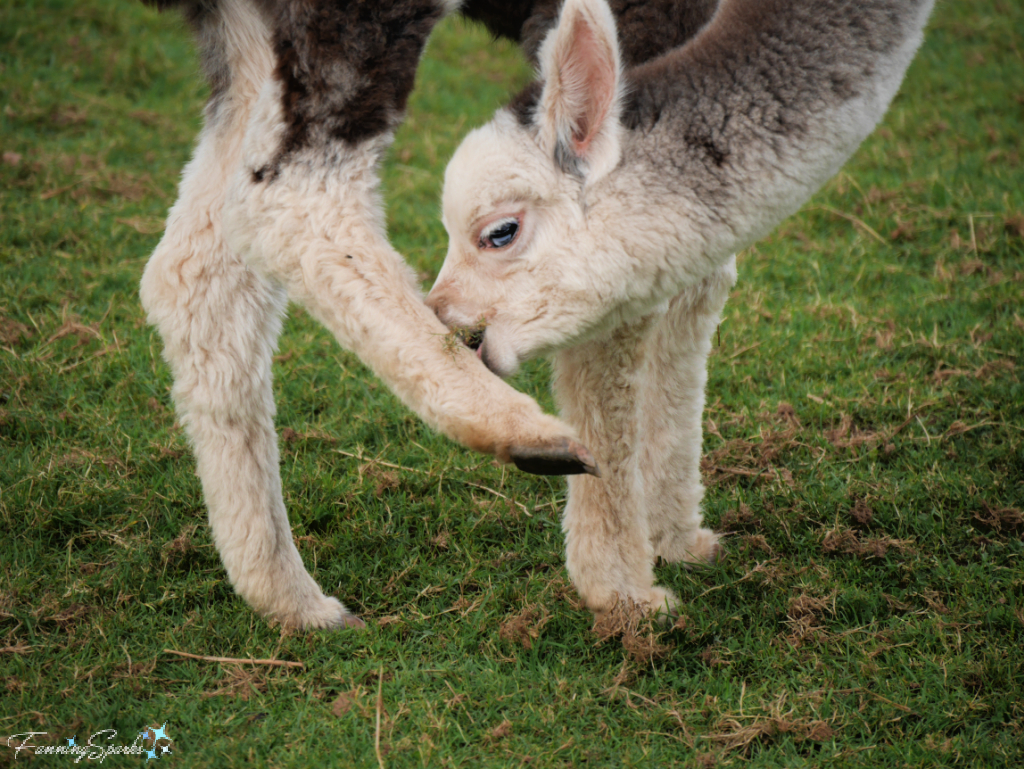
… pompadour hairstyles, …
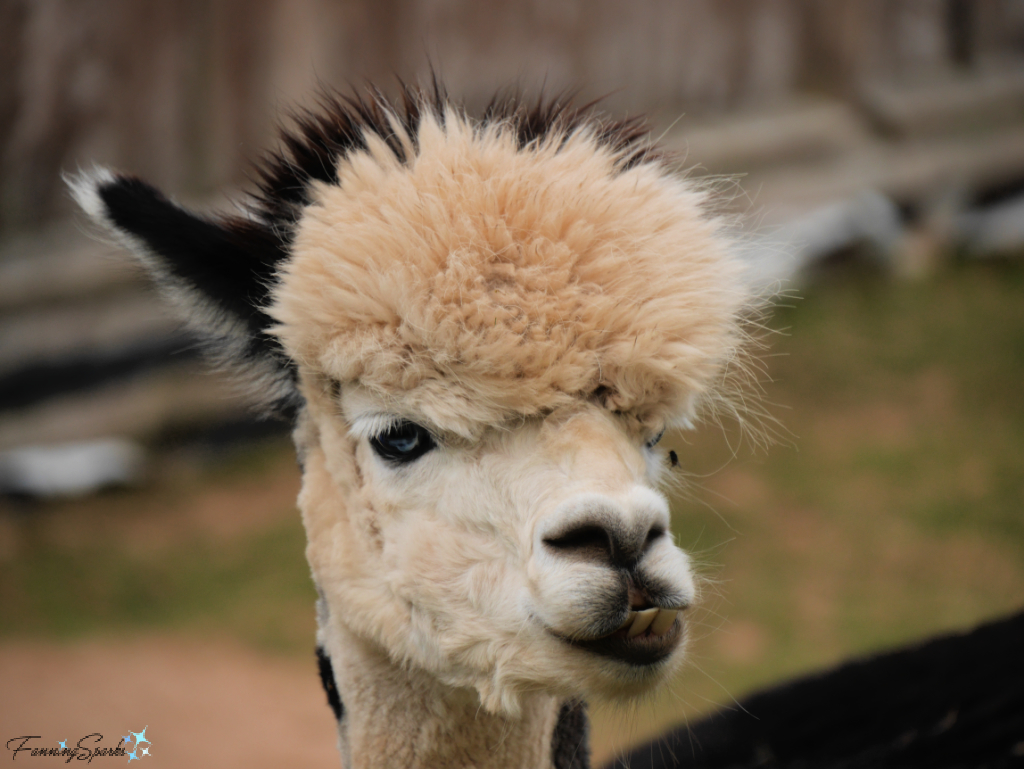
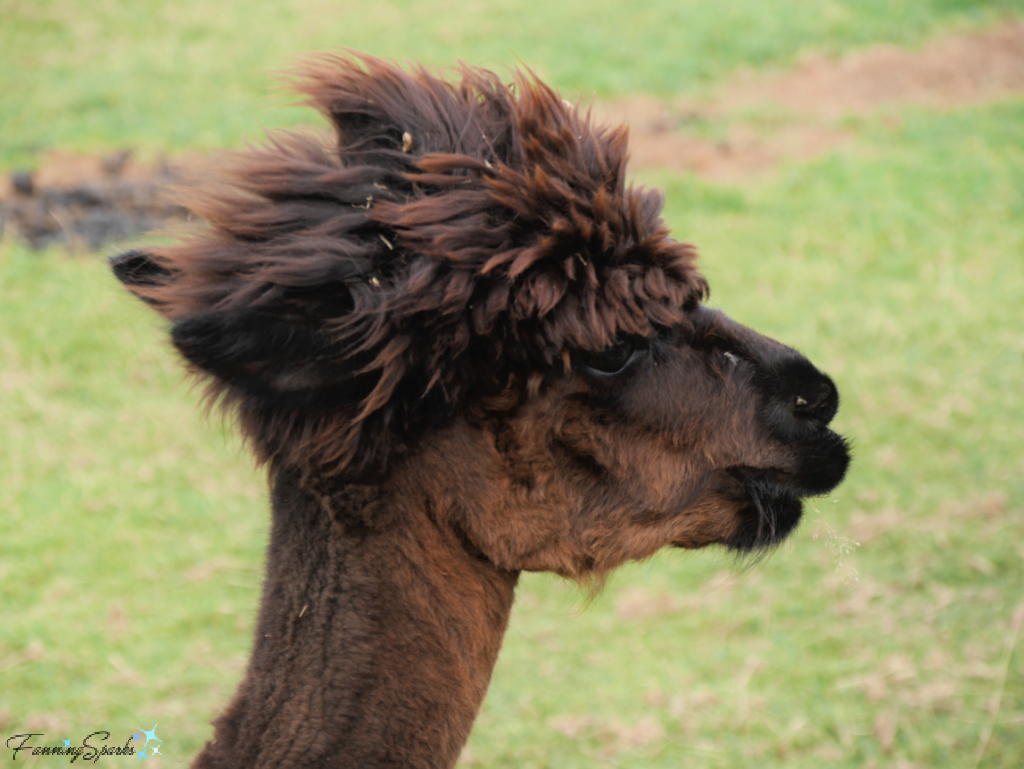
…and amusing expressions make for great photos.

Returning to the subject of the alpaca fleece, the Alpaca Owners Association explains, it is “often compared to cashmere [and] can be turned into a wide array of products from yarn and apparel to tapestries and blankets. The fleece itself is recognized globally for its fineness, softness, light weight, durability, excellent thermal qualities, and luster”.
Naturally, this piqued my interest—I wanted to see and feel alpaca yarn! The folks at Wool ‘n Tart, a lovely yarn shop in Wolfville, Nova Scotia, were most helpful (Thank you!). They showed me yarns with alpaca content like these from Legacy Lane.
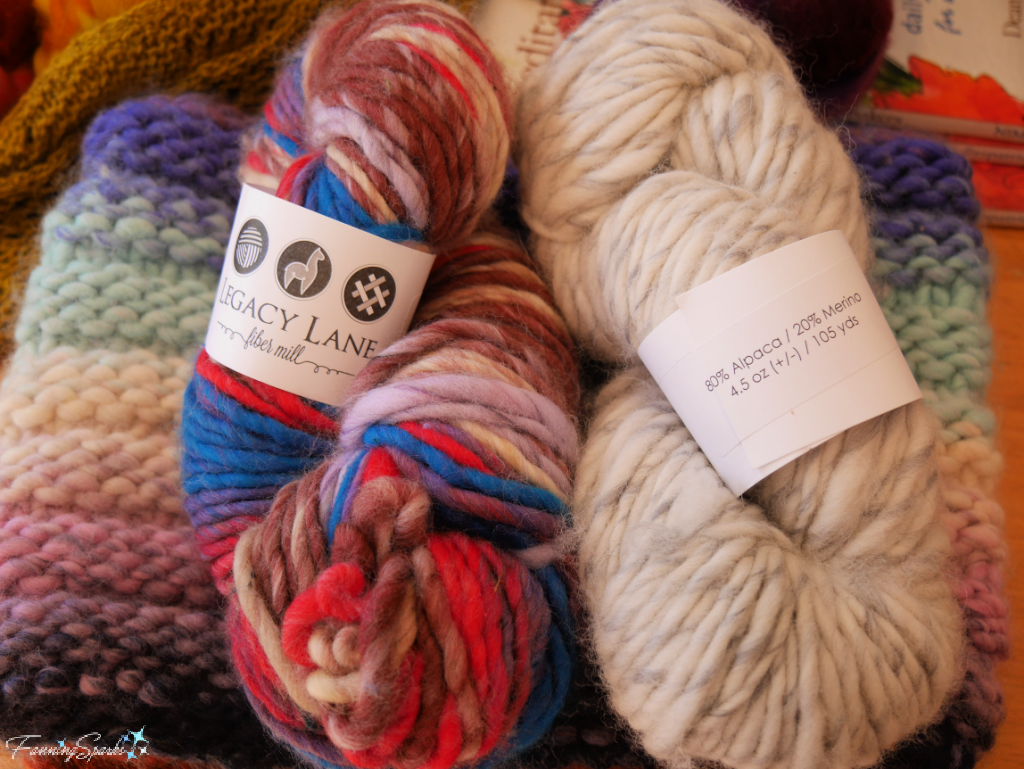
They also had natural-colored yarns containing alpaca fibers. “Alpaca fleece has a variety of natural colors, making it very desirable. Sixteen colors are officially recognized (white; beige; and shades of fawn, brown, black, and grey) with many additional subtle shades and hues.” This yarn showcases some of the rich white, cream and brown colors.

Then came the pièce de resistance—a jaunty alpaca fiber pom-pom atop a hand-knit wool toque!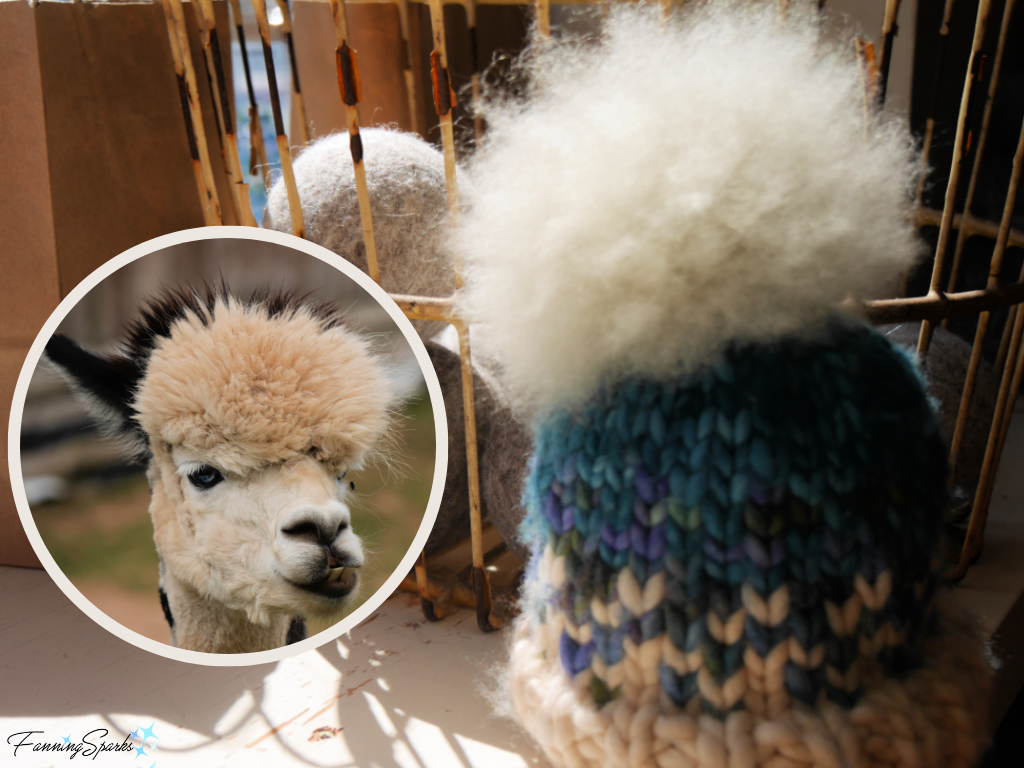
More Info
This alpaca photo shoot took place at Meadow Brook Stables, located in Alton, Nova Scotia, Canada. The Stables focus on breeding American Paint Horse Association (APHA) horses and also offer riding lessons and horse training. In addition to some of the best bred APHA horses in Canada, they care for a variety of livestock on their farm including the alpacas featured in this blog post. See the Meadow Brook Stables website for more information. Thank you Anna!
Wool ‘n Tart is located in Wolfville, Nova Scotia, Canada. As stated on the Wool ‘n Tart website, “Our cozy little shop has been open since 2012, and for the past ten years, we have been Wolfville’s foremost stop for all of your knitting and fibre needs – including a beautiful selection of natural fibres and locally sourced yarn, including our own yarn, produced from our Cotswold sheep in the Gaspereau Valley! We also offer plenty of finished objects, such as locally produced woven scarves, blankets, and hooked rugs.”
You may also be interested in the previous blog post, From Sheep to Shawl, in which I share my experience attending a week-long class at the John C Campbell Folk School covering the farm-to-fashion journey of sheep’s wool.
The Alpaca Owners Association serves to facilitate the success of its members within the alpaca industry. You can learn more about this organization on the Alpaca Owners Association website.
Today’s Takeaways
1. Alpacas are raised for their soft and luxurious fleece.
2. Alpacas are great photography subjects.
3. Consider visiting a local farm to learn more about the farm-to-fashion journey.


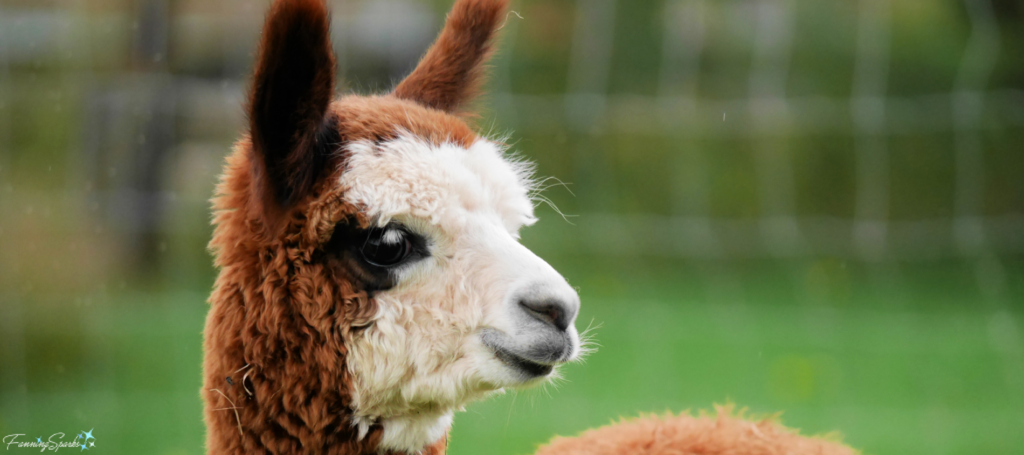


Comments are closed.